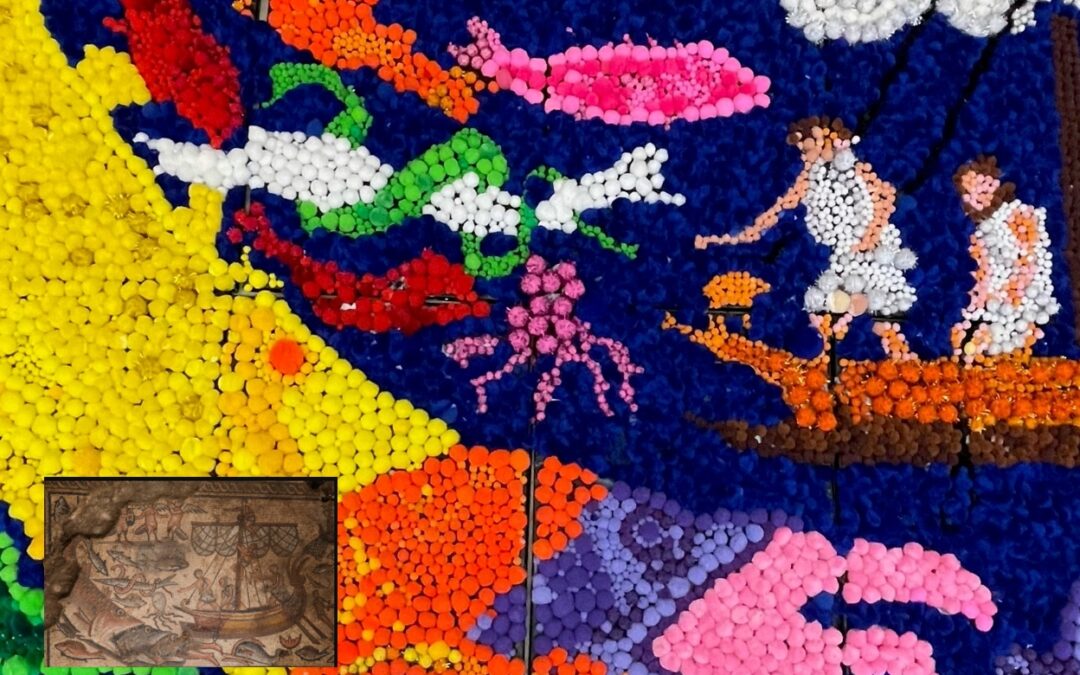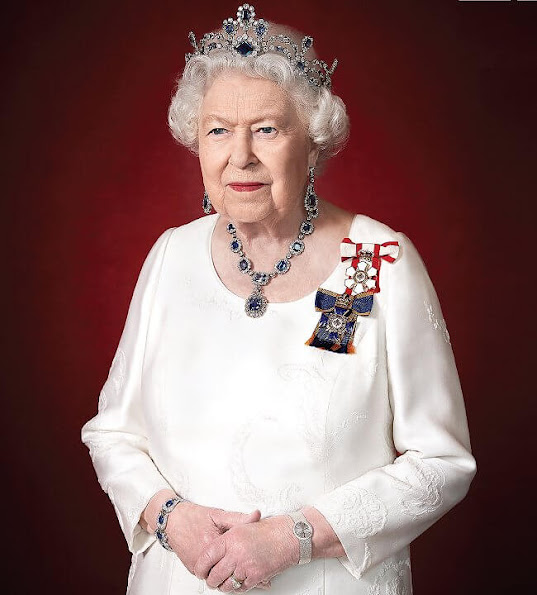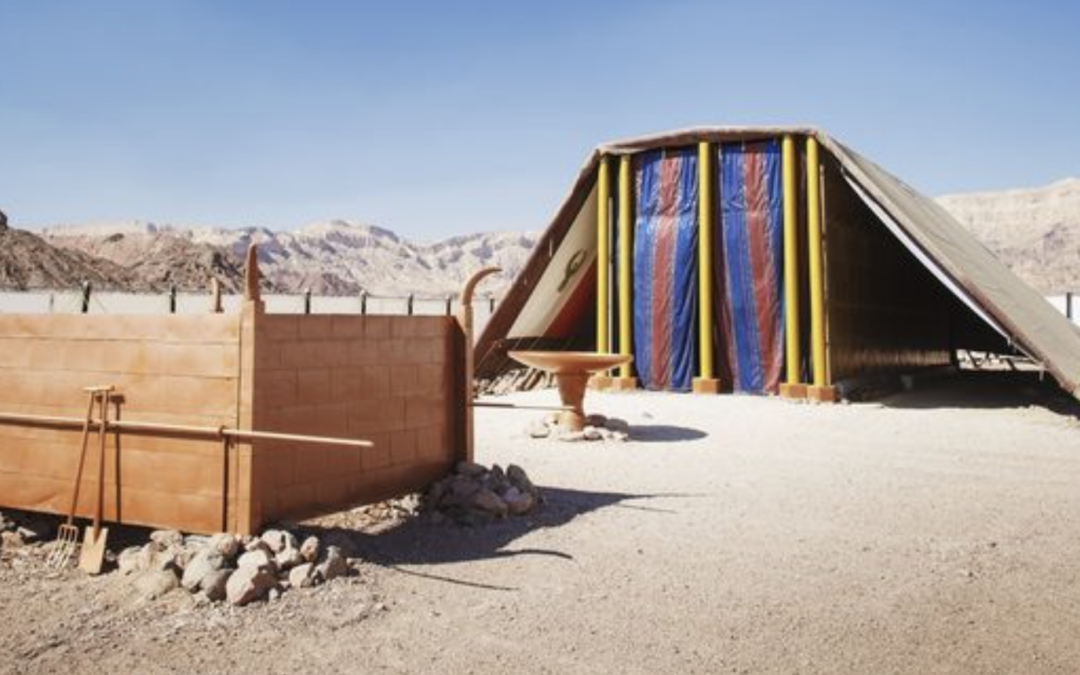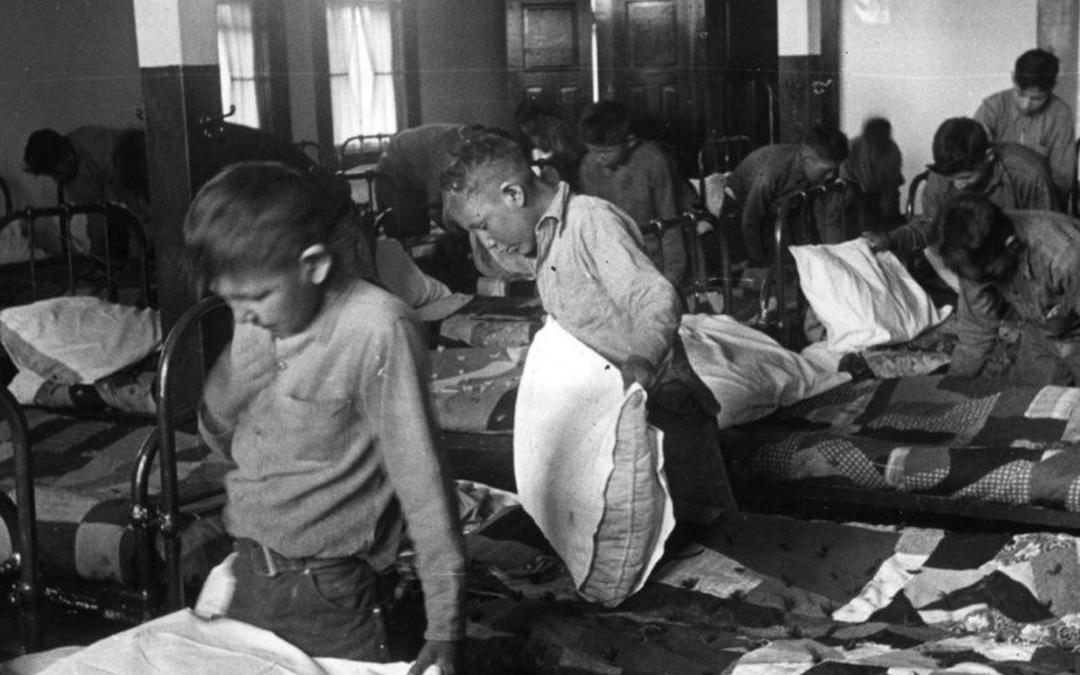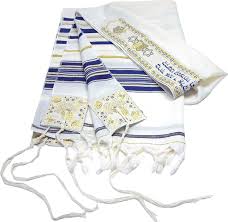 The tallit is one of the most familiar symbols of Judaism. The commandment behind the tallit is found at the end of our parsha, in the mitzvah to wear tzizit, string fringes at the edges of any four cornered garment. Tzitzit is so fundamental to Judaism, that the paragraph about the mitzvah of tzitzit is recited twice daily as the third paragraph of the Shema prayer.
The tallit is one of the most familiar symbols of Judaism. The commandment behind the tallit is found at the end of our parsha, in the mitzvah to wear tzizit, string fringes at the edges of any four cornered garment. Tzitzit is so fundamental to Judaism, that the paragraph about the mitzvah of tzitzit is recited twice daily as the third paragraph of the Shema prayer.
The tzizit are made up of eight strings which are attached to the ends of the four cornered garment. Today this is worn primarily in the form of a tallit used in the synagogue, or a tallit katan (worn under one’s clothing). The Torah says that the tzizit must include both white strands and strands that are “techelet”, or royal blue in colour. (Techelet was not worn for many years, because the ancient way of extracting the techelet dye was lost. However, some have rediscovered this ancient dye, and use them on their tzitzit.).
The basic purpose of the tzizit is to be a visual reminder to carry out the mitzvoth of the Torah. But there are other elements of symbolism to the tzitzit. The Torah seems to connect this mitzvah to remembering the Exodus from Egypt. Yet this idea opens the door to a fascinating comment by the famous 11th century Torah commentator Rashi.
Rashi says as follows:
“A thread of sky-blue [wool] (![]() ) so called because of the bereavement [suffered by the Egyptians] over the loss of their firstborn. The Aramaic translation of שִׁכּוּל, bereavement, is תִּכְלָא [a word similar to תְּכֵלֶת]. Moreover, the plague struck them at night, and the color of תְּכֵלֶת is similar to the color of the sky, which blackens at dusk; its eight threads symbolize the eight days that Israel waited from when they left Egypt until they sang the song at the [Red] Sea. – [Mid. Aggadah]”
) so called because of the bereavement [suffered by the Egyptians] over the loss of their firstborn. The Aramaic translation of שִׁכּוּל, bereavement, is תִּכְלָא [a word similar to תְּכֵלֶת]. Moreover, the plague struck them at night, and the color of תְּכֵלֶת is similar to the color of the sky, which blackens at dusk; its eight threads symbolize the eight days that Israel waited from when they left Egypt until they sang the song at the [Red] Sea. – [Mid. Aggadah]”
Rashi explains that the word for blue is similar to the word for bereavement. Even when we wear the tzizit and remember the miracles of the Exodus, at the same time we remind ourselves of the pain and suffering of the Egyptians. Rashi then continues to state that the Jewish people demonstrated sensitivity to the plight of the Egyptians by waiting 8 days before composing prayers and songs to thank God for taking them out of slavery.
Rashi is teaching us a powerful lesson. His explanation is a powerful statement about our role in tikkun olam. When we celebrate milestones in our lives, we immediately give thanks to God. We celebrate happy occasions and recovering from illness or dangerous events with special blessings of thanks. But the tzizit remind us that even in moments of joy, one’s joy is never complete, because there may be others who have experienced loss. Even in moments of joy we need to remember that there are “strings attached”, that our joy should not obscure our responsibilities to the less fortunate. The tzizit are worn to remind us to always have others in mind; we wear them each and every day as reminder that there is still a lot of work for us to do to make this world better.
A few weeks ago, a group of grade six students approached me to ask to create a special “breakdance” piece as part of our gym show in order to raise funds for earthquake victims in Nepal. The students wrote to our parent body about their initiative and we are looking forward to its success. We hope to have a wonderful donation to forward to the Israeli organization Tevel Betzedek, which has been helping out projects in Nepal for many years.
In our lives, we have to remember that often there are “strings attached”. The tzizit remind us about our commitment toward mitzvoth but also about our responsibility toward recognizing human suffering and getting involved.







